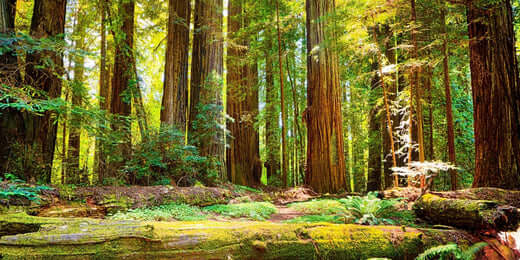如何种植海岸红木种子:分步指南
海岸红杉是大自然最壮观的奇迹之一,是地球上最高的树种。这些树原产于加利福尼亚州和俄勒冈州雾蒙蒙的沿海地区,可以存活数千年,长到 300 英尺高。只要有耐心和适当的照顾,您就可以从种子开始培育自己的海岸红杉。本指南将指导您完成整个过程的每个步骤。
步骤 1:获取优质种子
确保从信誉良好的供应商处采购高品质的海岸红木种子。新鲜种子的发芽率更高,因此检查包装或与供应商核实新鲜度非常重要。
第 2 步:准备冷分层
海岸红杉种子需要一段时间的冷分层来模拟它们在野外经历的自然条件。
- 润湿介质:准备湿沙或泥炭藓混合物。应保持湿润但不浸透。
- 混合种子:将种子放入培养基中,确保它们分布均匀且不聚集在一起。
- 冷藏:将混合物密封在塑料袋或容器中,并在 35–40°F (2–4°C) 的冰箱中保存 30–60 天。
- 定期检查:确保介质在此期间保持湿润但不积水。
步骤 3:准备生长介质
海岸红杉喜欢排水良好、营养丰富的土壤。使用种子起始混合物或自己制作等量堆肥、沙子和泥炭藓的混合物。
- 填充容器:用准备好的生长介质填充小盆或育苗盘。
- 湿度检查:轻轻浇水,确保土壤均匀湿润但不潮湿。
步骤 4:种植种子
冷分层期完成后:
- 种植深度:将每颗种子埋入土壤约 1/4 英寸(6 毫米)深。用一层薄土或沙子轻轻覆盖。
- 间距:如果在托盘中种植多粒种子,则应使它们间隔至少 2 英寸,以利根部发育。
第五步:提供合适的环境
海岸红杉种子需要特定的条件才能发芽和生长:
- 温度:保持恒定的温度在 65–75°F (18–24°C) 之间。
- 光照:将花盆放置在有明亮、间接阳光的地方,或使用生长灯每天提供至少 12 小时的光照。
- 湿度:通过向土壤喷雾或在花盆上放置塑料罩来保持较高的湿度。确保通风良好,防止霉菌生长。
第六步:浇水和护理
- 湿度:保持土壤持续湿润,但不要积水。海岸红杉在潮湿的环境中茁壮成长。
- 排水:确保适当的排水,以防止根部腐烂。
步骤7:发芽
发芽可能需要 30-90 天,因此耐心是关键。幼苗发芽后:
- 间苗:如果将多粒种子种植在一起,则将其间苗至最强壮的幼苗,以避免竞争。
- 施肥:每月施用一次稀释、均衡的液体肥料,以促进健康生长。
步骤8:移植幼苗
一旦幼苗长到 4 至 6 英寸高并形成强健的根系,就将它们移植到更大的花盆中或直接移植到地里。
- 选择正确的地点:海岸红杉喜欢气温凉爽、湿度高、生长空间充足的地方。
- 土壤:选择排水良好、富含有机物的酸性土壤。
- 浇水:持续浇水,特别是在干旱时期。
长期护理
- 覆盖:在树根周围铺设覆盖物,以保持土壤湿度并调节温度。
- 修剪:需要进行最少的修剪,但根据需要去除枯死或受损的树枝。
- 保护:保护幼树在生长初期免受强风和霜冻的侵害。
最后的想法
从种子开始培育海岸红杉树是一项回报丰厚且长期的项目。这些雄伟的树木需要耐心和细心,但可以成为后代的遗产。无论您是种植一棵树还是开辟一片树林,遵循以下步骤都将为您的海岸红杉提供最佳的茁壮成长机会。





